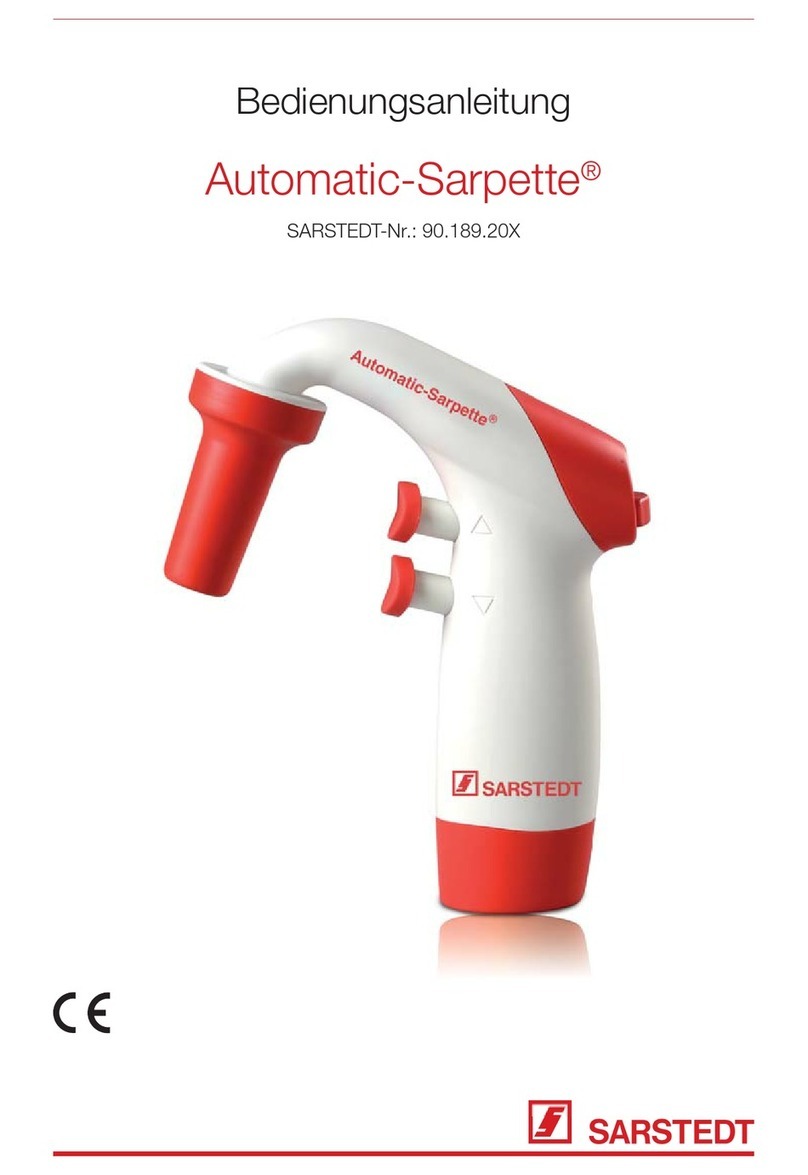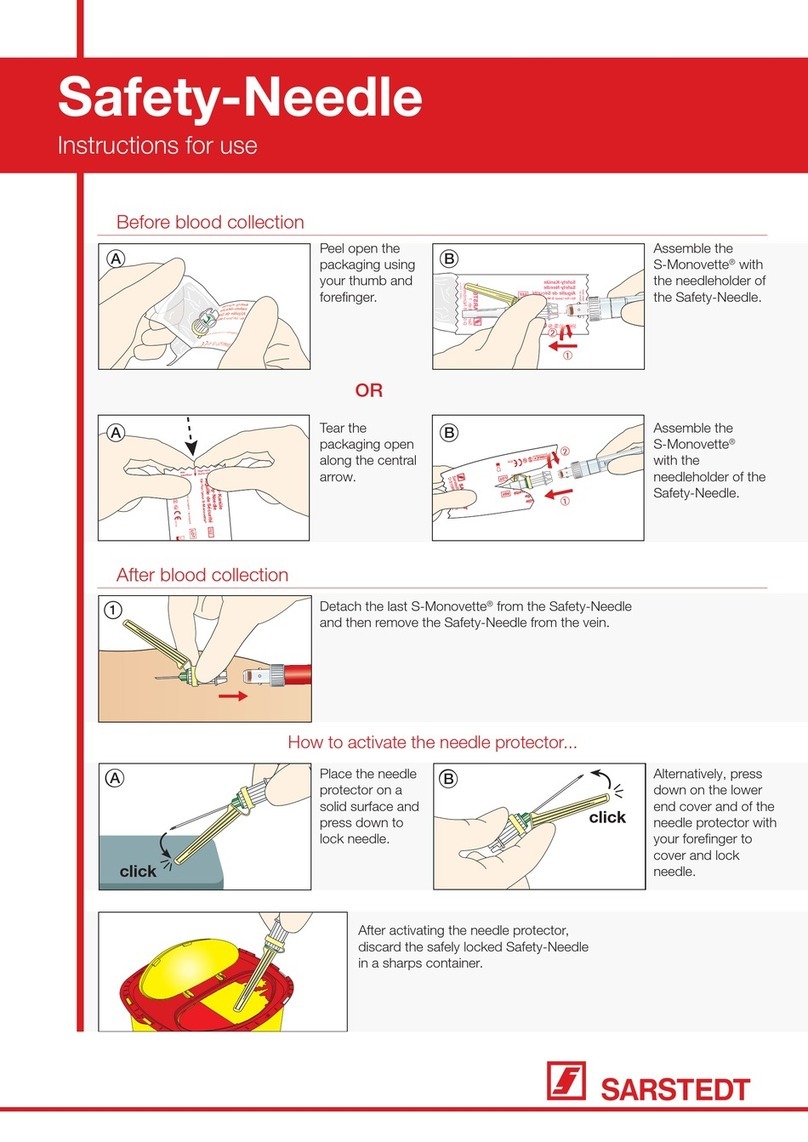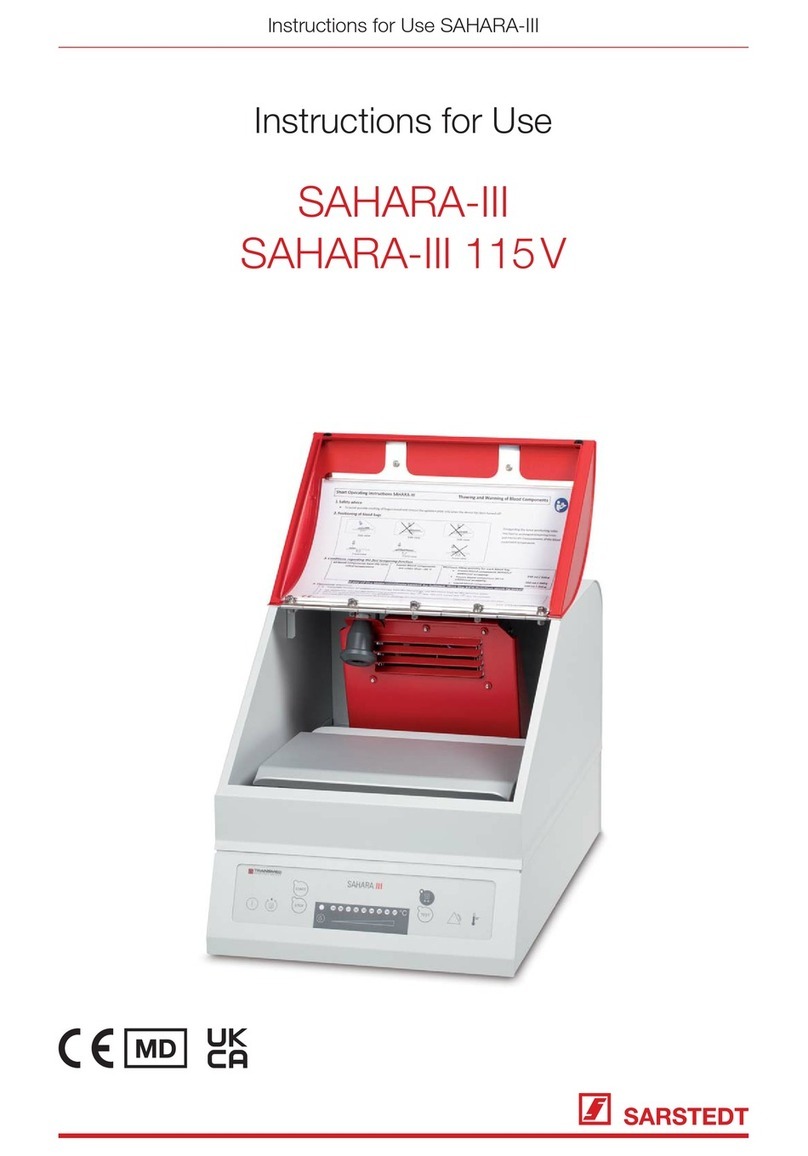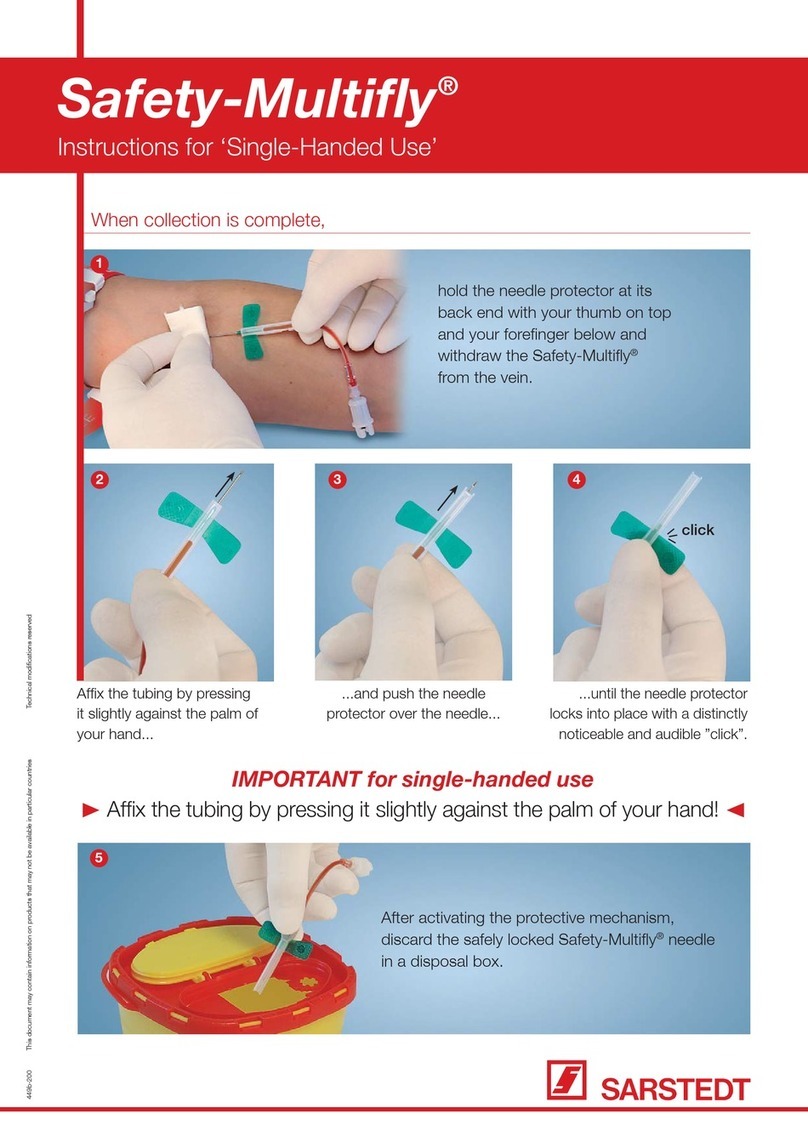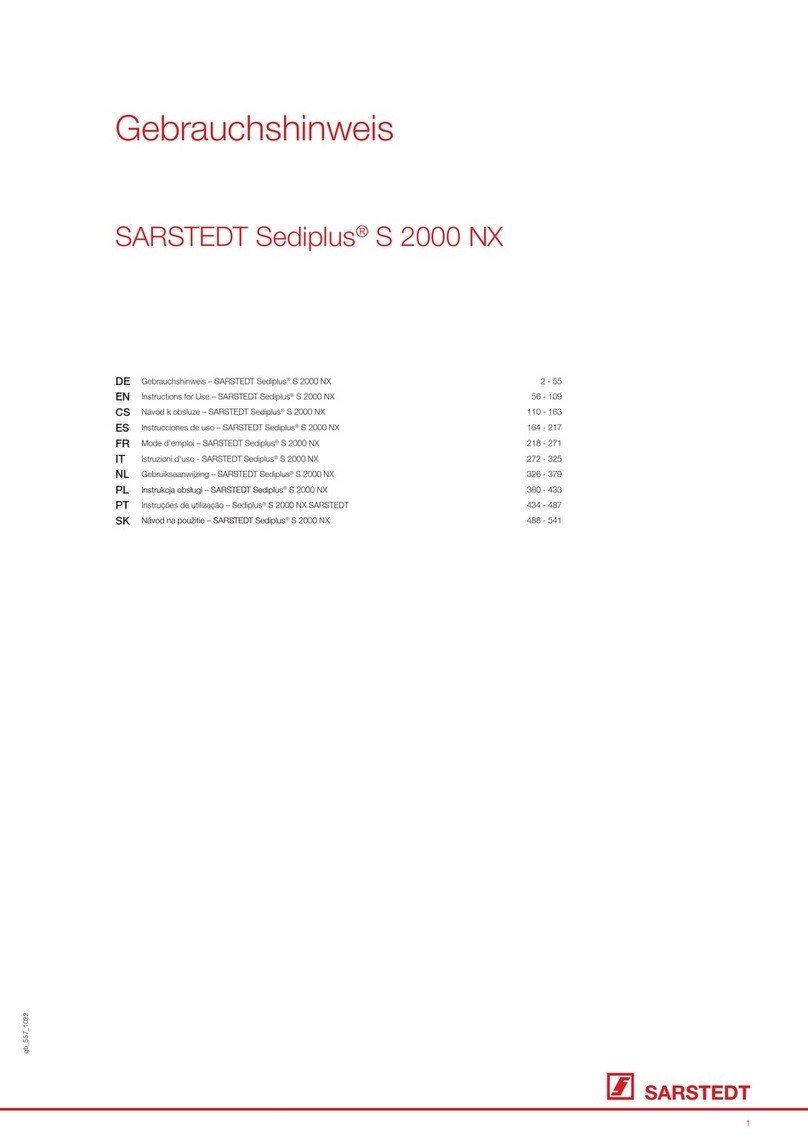
Test principle
The test card contains chromatographic filter paper impregnated with distilled guaiac
resin as an indicator. A stabilised alcoholic peroxide solution acts as a developing
reagent.
Addition of the developing reagent will produce a blue coloration if occult blood is
present in the faeces sample.
The test principle is based on the peroxidase activity of haemoglobin which may be
present in the faeces. Haemoglobin will catalyse the oxidation of the chromogen
(guaiac resin) in the presence of hydrogen peroxide to form a blue colored compound.
The intensity of the blue coloration is proportional to the concentration of haemoglobin
in the specimen.
Test sensitivity
The test sensitivity of the HEMOPLUS®test is such that although there is a very high
probability of detecting bleeding from colo-rectal disorders, physiological gas-
trointestinal blood loss is not detected. Field trials proved that it is within the ideal range
(0.22–0.26 g Hb/100 g faeces) for screening for colo-rectal cancer.
Returning the card
After the third day the patient should place the test card in the HEMOPLUS®
envelope and return it to the laboratory for analysis. The envelope is made from a
special non-permeable paper in the interest of microbial safety.
Analysis
Analysis should only be carried out on dry faeces samples, for up to 12 days after the
last sample was taken, otherwise a loss of sensitivity must be expected. A reduced test
sensitivity of HEMOPLUS®has been established for fresh stool samples.
•Remove the perforated flap labelled ”open for test evaluation“ from the back of the
test card completely. Add 1 drop of developing reagent to each of the 12 test
positions.
•The presence of occult blood is indicated by a blue coloration. The color is stable for
60 seconds, its intensity may then increase up to two minutes and then begin to fade
slowly.
•If no blue coloration appears within 30 seconds the test is NEGATIVE.
If the blue coloration appears within 30 seconds the test is POSITIVE.
example for examples for a positive result
a negative result
•Any blue coloration appearing within 30 seconds should be regarded as a POSITIVE
result.
•Even if only one of the 12 test positions shows a blue coloration the test should be
regarded as positive as occult blood is indicated in this particular sample.
•A weak, asymmetrical blue coloration may develop in a faeces sample. This should
also be regarded as positive and investigated further.
•The test card should not be developed in direct sunlight or at an open window.
Exposure to direct sunlight or U. V. light during developing can lead to a blue-green
coloring of the test paper which would give a false-positive result.
•If the test paper shows a blue-green coloration before developing, the test card
should be discarded and the test repeated on a new HEMOPLUS® card.
Performing the test
The patient is allocated one HEMOPLUS®envelope containing 3 test cards,
12 cardboard spatulae and comprehensive instructions for use.
If the testing is to be done at home the patient’s doctor should explain the
reason for the test and the measures to be observed. The reliability of the test
result depends on the patient observing the correct methodology.
Always inform the patient of the following:
1. Three days prior to the test period the patient should eat food which is high in
fibre, e. g. vegetables, salads, nuts, wholemeal bread. This will encourage any
carcinoma present to bleed.
2. Foods such as black pudding and raw meat should not be eaten as these may
cause false-positive results.
3. Excessive consumption of vitamin C, peroxidase-containing vegetables e. g.
kohlrabi, horseradish and soybeans should also be avoided for the 3 days
before the test period. A daily intake of up to 2 g vitamin C will not affect the
test.
4. The test should be postponed in the event of diarrhoea or menstruation in the
patient. However, slight bleeding from the gums (after dental work) or nose
will not affect the test.
There are precise instructions for the patient on the back of each card. The
following must be observed:
•Three consecutive bowel motions are required for the test.
•4 samples, from different areas of the stool, should be taken from each
motion. Every sample must be taken with a clean spatula.
•The test positions 1–4 must each be filled completely with the sample.






